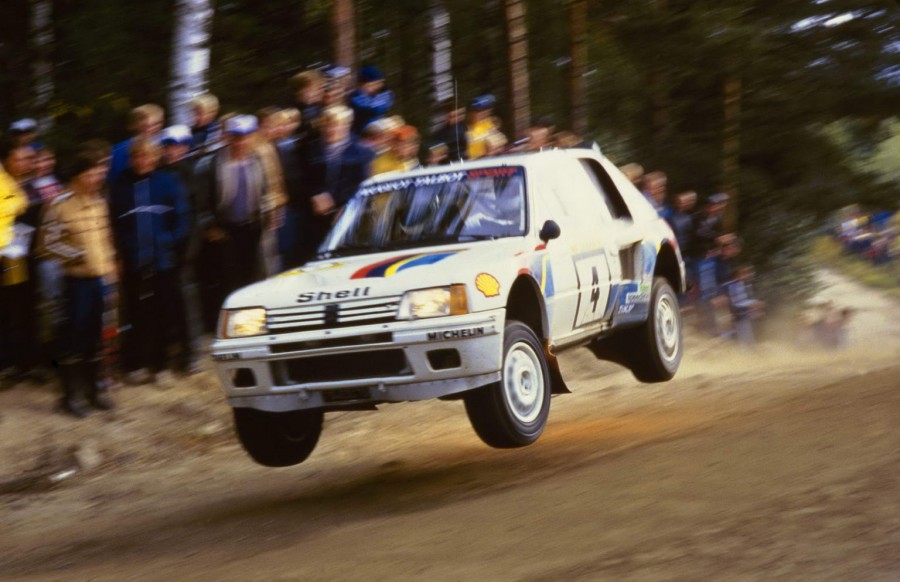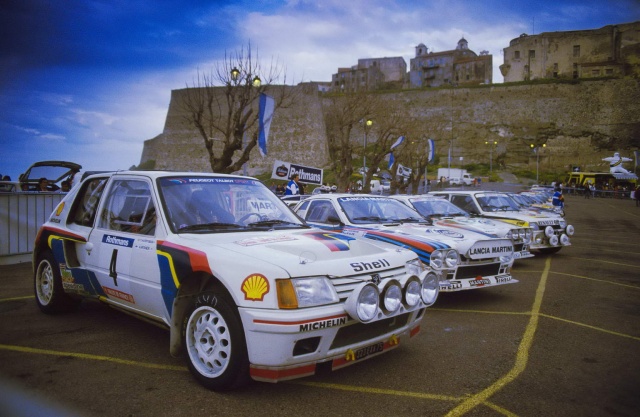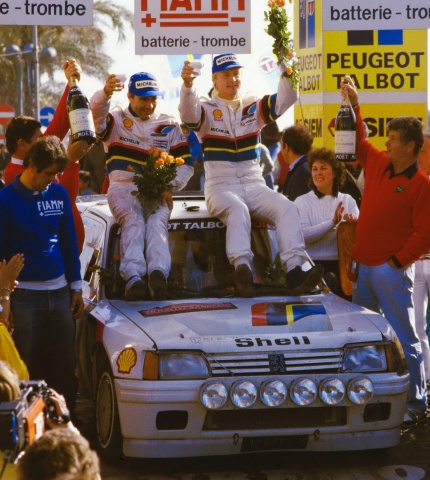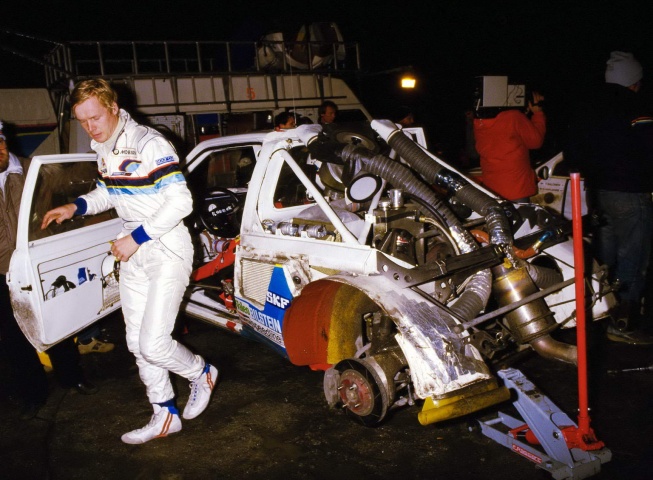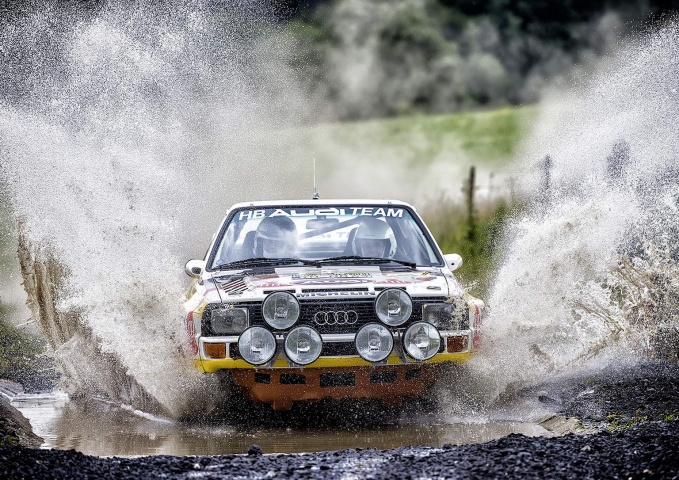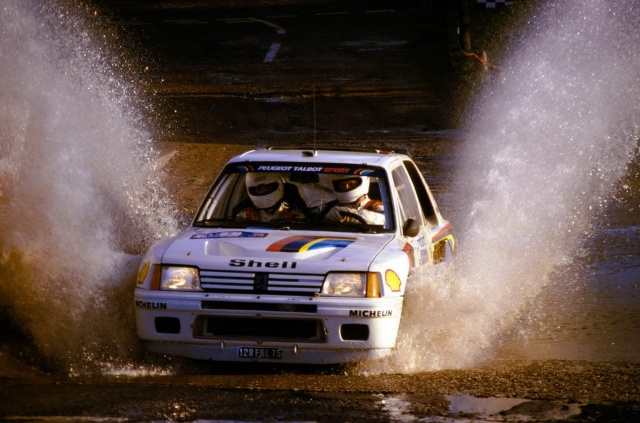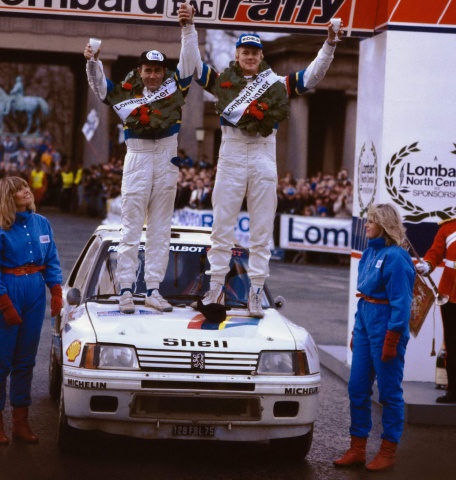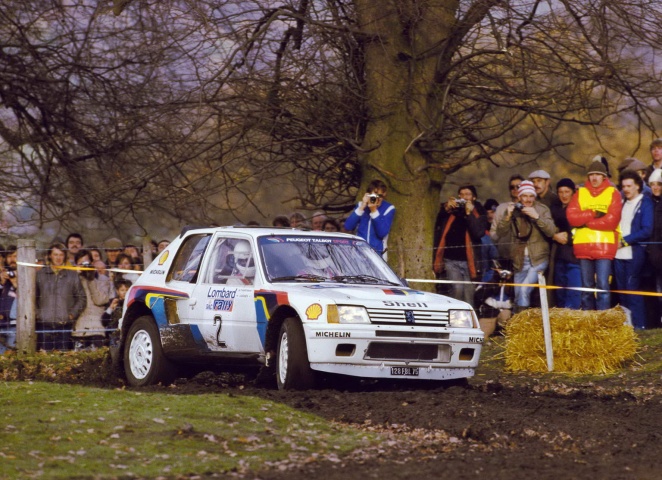After Audi's innovations, what could the rest do to catch up? The 1984 season saw some interesting new developments, and the speeds rose ever higher in the world of Group B rallying.
Paris had woken up. Taking lessons from its competitors, Peugeot's 205 T16 (T for turbo, 16 for valve count) looked approximately like its road-going relative, but every single component had been optimised to be as strong, light and easy to service or replace as possible. Jean Todt's vision and organisational skills ensured that only the best engineers worked on the design, and it would set the template for the swansong days of Group B.
The 1984 season started much the same as the previous year, with Audi Sport fielding a four-car squad comprising of Mikkola, Blomqvist, Mouton and Lancia refugee Röhrl. Cesare Fiorio, boss of the Abarth team, reckoned that Markku Alen and young Henri Toivonen would have no hope in their two-wheel drive 037s, but some extreme driving antics ensured that the little supercar was never too far away. Most of the other manufacturers played only bit parts, with Toyota pulling their usual trick of winning the Safari in the unbreakable Celica.
The Sport Quattro
Since its inception, the Ur-Quattro suffered from inherent understeer on quicker stages, so Ingolstadt's engineers set to work on improving the ungainly machine. The result was the short wheelbase Sport Quattro, with a foot hacked out from behind the B-pillar. A more steeply raked windscreen from the humble Audi 80 road car, all-aluminium construction for the five-cylinder engine to allow more boost and swollen arches stretched over nine-inch tyres were some of the improvements made. However, the end result was a mixed bag. The 450hp car was now a twitchy monster, and didn't inspire confidence in the team's drivers. Reliability also suffered, and even the usually reserved Stig Blomqvist was vocal in his criticism of the machine, to the point where he pushed for a return to the old long wheelbase A2 model, no doubt a factor in his triumph in the World Championship that year. In hindsight, it is now obvious that Audi realised where the Quattro's shortcomings were, but its insistence on keeping production car roots meant that it would fight a losing battle until the end of Group B. And don't worry, the insane final evolution S1 Sport Quattro will be covered in due course...
Peugeot prepares for attack
It took only a couple of stages for the 205 T16 to lead its first World Championship rally. Ari Vatanen powered his new rocket into a commanding lead in Corsica, and if it were not for standing water on one of the final stages he would have won outright. Ominously, the car burned upon impact, thankfully without injury to Ari or his co-driver Terry Harryman, but this was a portent of the danger associated with turbocharged Group B cars.
How come the car was so fast out of the box? In typical Jean Todt style, no stone was left unturned to ensure the car's competitiveness. The PSA parts bin was raided where possible, with the engine block of the diesel XU unit used, along with transmission components from the Citroen SM. It differed hugely from the Quattro in that it was basically a mid-engined spaceframe with a rough approximation of a 205 shell draped over it, and this was a huge advantage in terms of setup possibilities. Vatanen described it as the nicest car that he'd ever driven, "like playing a piano". The results showed, and the little weapon would win three rallies in his hands before the year was out, despite only running a partial campaign. Even the method that Peugeot Talbot Sport used to achieve homologation was admirable. A minimum of 200 cars had to be built before completion use was allowed in accordance with the rules, so Todt farmed out the assembly to Heuliez in order to ensure no distractions got in the way of the competition department, with each car painted in the same dark grey colour.
Not one to rest on its laurels, Peugeot Talbot Sport were designing an Evolution version almost in parallel to take the power output to over 500hp, with all sorts of aerodynamic addenda tacked on in an effort to keep the wheels in some proximity to the ground. The 205 T16 influenced every subsequent Group B contender and remained competitive up to its very last rally. Many of the team went on to achieve huge success in other projects, including Le Mans, Peugeot and Citroen's modern WRC programs and F1, a testament to the skills fostered by Todt.
The rest
The old motorsport adage of "if you stand still, you go backwards" was proving true for the other manufacturers. Renault's 5 Maxi Turbo was still in development, but two-wheel drive would render it an also-ran on anything other than dry tarmac. Opel, Nissan and Toyota ploughed on with their simple and reliable relics, and Austin Rover was in the initial stages of work on a naturally-aspirated special. Ford had already canned the RS1700T project (similar to the original Quattro), and as also working on a spaceframe car, but no wheel would be turned for a few months yet. Peugeot therefore had no major obstacles in their way of the World crowns heading into 1985.
The crowds were now becoming a major worry for all involved. Fans reached out to touch cars as they passed and horror stories of mechanics digging severed fingers out of air scoops did the rounds. Special fuel, developed in parallel with F1 turbo technology and utilising experimental blends, was in full use, and all sort of rumours of rule-bending and blatant illegality were rampant. One such example was when Michele Mouton's battered and terminally ill Quattro was miraculously fixed at a roadside service, until a few eagle-eyed fans observers noticed some 'differences'. The story went that the competition plates were simply swapped on to a test car, and Michele was sent on her merry way. All this mystery only added to the hype and spectacle, and rallying was starting to rival F1 in terms of fan interest.
Something was also brewing in Turin. Hushed words were shared around the service parks and special stages, developing into full-blown rumours about Lancia's new beast. Codenamed Project #038, another silhouette racer bearing only the slightest resemblance to the Delta road car was in development, said to have more power than anything ever seen on a rally stage. We'll get to that in our next instalment...
More reading
This is Maurice's second article in the Group B series. Click here to read the first and click here to read the third.

